Investing for Retirement in Australia – How to Invest for Retirement 2021
Please note that we are not authorised to provide any investment advice. The content on this page is for information purposes only.
Please note that we are not authorised to provide any investment advice. The content on this page is for information purposes only.
Having a solid retirement plan with a well-thought investment strategy may assist you with much-appreciated income streams later in life. There are a few common asset types most people benefit from including in their retirement portfolios which usually focus on achieving a healthy and diverse risk profile.
In this tutorial, we put together resources to explain some of the most common assets investors consider for retirement plans and their significance. Additionally, we will cover a few popular online brokerage platforms where investors can buy and sell those asset classes. Below you will see information that can assist you in analyzing how different solutions compare with each other with regards to their pros, cons, features, security and fees.
Table of Contents
Choosing the right platform has great importance in trading success. Trading tools, user interface, learning resources and other interactive options can make or break successful deals. We recommend eToro not only because they are doing a great job on those fronts but also they have implemented advanced security measures and pro-privacy technological improvements. You can get started with eToro in less than 5 minutes by following these steps and start investing in silver thereafter.
A well-functioning online broker can be the difference between confident trading operations and insecurity about your investments. Great customer service, quality trading software, mobile apps, rich learning resources and favourable fees are some of the main factors traders and investors in Australia should look out for. Here are 3 online-brokerage firms worth considering for signing up.
1. eToro – Best Overall Way to Invest for Retirement in Australia
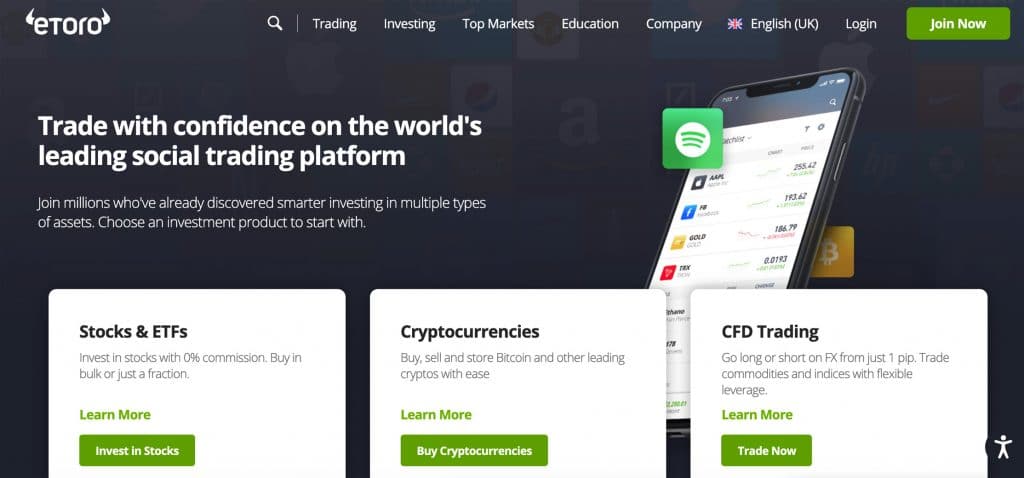
It is a global social investment platform and multi-asset trading firm. It provides an online trading platform for ordinary consumers to trade stocks, commodities, crypto assets, currencies and ETFs. Online investments in foreign reserves and crypto-assets are becoming increasingly popular, from Wall Street and the Frankfurt Stock Exchange to Bitcoin and Dogecoin. eToro, a social investment network and app that allows you to easily invest in various options online, is one platform that is making it easier than ever to invest online. The goal of eToro is to make online trading and investing accessible to beginners and everyday users, and the website contains a wealth of resources.
eToro is a trustworthy broker. It stores all the funds securely in tier 1 banks, and all of their personally identifiable information is protected by SSL encryption. ASIC regulates the eToro broker, which was founded in 2007. It is not registered on any publically traded exchange and does not have a bank parent. On trading days, their customer support is available 24 hours a day, seven days a week, ensuring that eToro clients always have someone to turn to if they encounter a problem or require support.
eToro is regulated by the following top tier financial authorities.
eToro doesn’t have a confusing fee structure and everything seems pretty straightforward. The company doesn’t charge trading fees and instead makes its profits through the spread of every financial asset buy/sell order incurs. Users can make deposits commission-free on the platform through a number of convenient methods such as debit/credit cards, bank transfers, Paypal and even Skrill. Withdrawals are subject to a fee of $5 on the platform which is probably not a concerning amount for any serious investor.
eToro has a well-built mobile app in addition to the web-based trading platform and software. While beginner users can benefit from rich financial trading related learning resources, advanced users can still enjoy sophisticated research and insight tools. eToro’s charting tools also work well and provide a powerful environment for users who are keen on technical analysis. We found the selection of assets offered on the platform to be satisfactory and currently 32 commodities and 256 ETFs trade on the platform in addition to 2593 stocks representing company shares.
| Fee Type | Fee Amount |
| Commission Fee | 0% |
| Deposit Fee | £0 |
| Withdrawal Fee | £5 |
| Inactivity Fee | £10 per month (after 12 months of inactivity) |
Pros
Cons
67% of retail investor accounts lose money when trading CFDs with this provider.
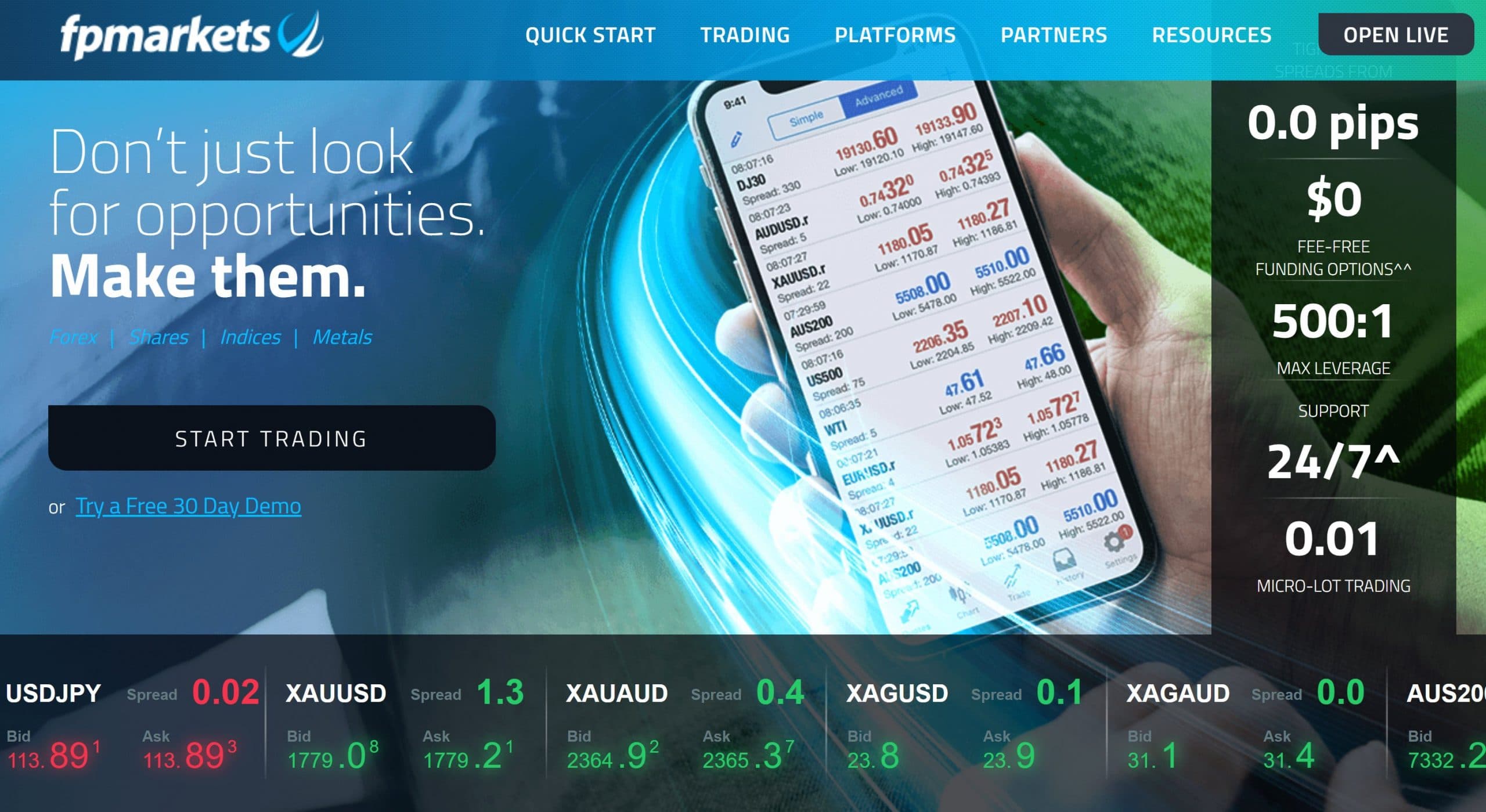
FP Markets is a reputable international CFD and Forex broker that aims to create the most incredible trading platform where market participants could trade in global markets. They have strong relationships with leading tier-1 financial institutions, which means that traders can benefit from deep liquidity and tighter spreads.
FP Markets offer more than 10.000 global shares which might be attractive for some traders and investment-oriented portfolios. And in addition, traders in Australia can take advantage of 19 global indices to harness optimized diversification and access to exposure from general stock markets from other countries. In Australia, the company runs under an Australian Financial Services Licence (AFSL) and has won the award for ‘Best Forex Broker Australia.‘
FP Markets is not a publicly-traded company, nor does it operate any bank. FP Market has obtained a trust score of 81 out of 99, making it an average risk broker overall. All third parties (including clients, suppliers, subcontractors, or agents) who can access or use FP Markets or personal information on there must follow a strict privacy policy. Their policy outlines FP Markets’ responsibilities for managing and protecting personal data from a privacy perspective. This kind of serious attitude when it comes to user data privacy is definitely welcome. Unfortunately, the company doesn’t offer 2FA security measures which can be crucial to have today.
Overall, FP Markets, founded in 2005, is a reputable global CFD and forex broker and is regulated by the following top tier financial authorities:
For starters, its Raw ECN accounts for MetaTrader platforms offer competitive pricing compared to industry leaders in terms of commissions and fees. On MetaTrader, however, there are far fewer symbols to trade, with less than 150 instruments in total.
Meanwhile, its Iress platform suite offers a substantial range of markets but is optimized for share trading, not forex. Platform and data fees are also a hurdle unless you have a high balance account or are an active trader.
Overall, FP Markets trails industry leaders in the research and education categories but stands out for its industry-leading pricing on MetaTrader.
The details of the fees charged by FP Markets are given below.
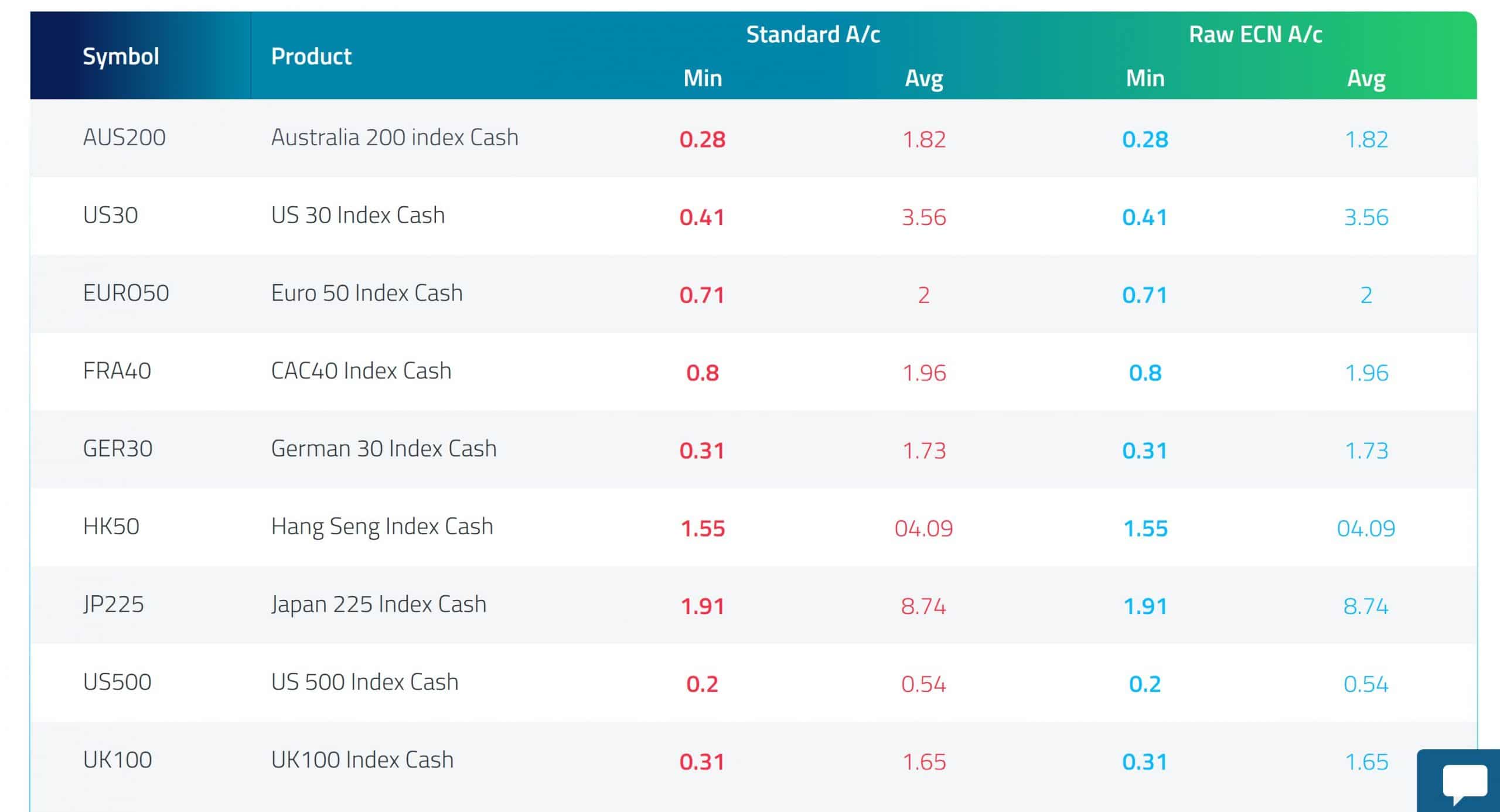
| Fee Type | Amount |
| Commission | FP has three account sizes, 1-25K, 25K to 50K and 50K+. The commission is charged according to the account size, 0.10% with a $10 minimum, 0.09% with a $9 minimum and 0.08% with no minimum all ASX trading, respectively |
| Withdrawal Fee | For AUD, 2% up to 30 USD + country fees |
| Deposit Fee | The deposit fee charged depends on the trading platform you choose to use. MetaTrader 4 and MetaTrader 5 are tottaly free to use. For Press Trader/ViewPoint, there is a $55 inclusive of GST per month. This fee is waived if a certain number of trades or commissions are executed. |
| Inactivity Fee | $0 |
Pros
Cons
67% of retail investor accounts lose money when trading CFDs with this provider.
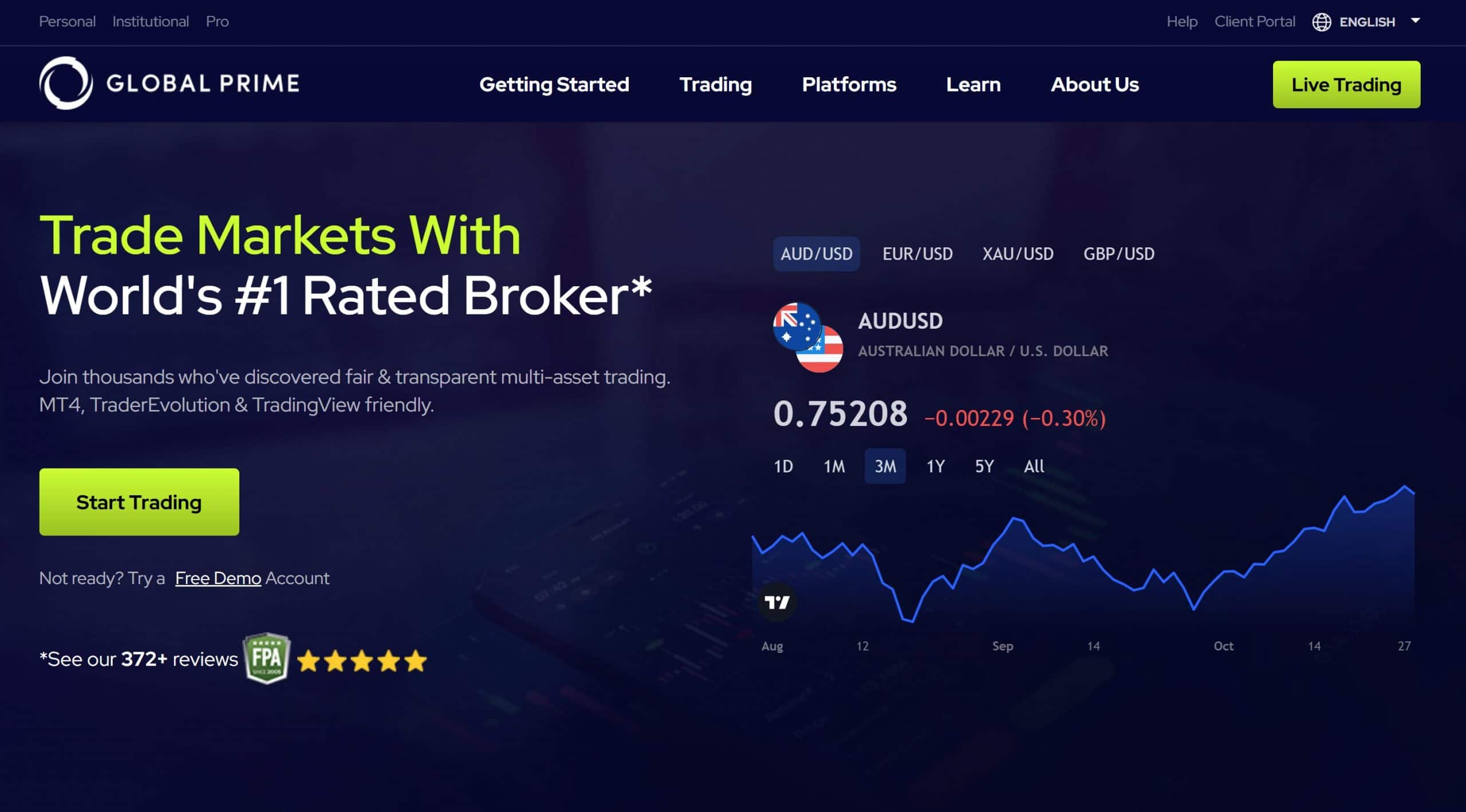
Global Prime is a trustworthy and legitimate broker that offers automated trade receipts with information on fill speed, slippage, spread, and liquidity provider. The company is also open about how it makes money through commissions, swaps, and interest. Furthermore, the MT4 platform offers cutting-edge encryption, secure logins, and industry-leading data privacy.
The Global Prime Group combination of networks across Australia (Global Prime PTY Ltd), Seychelles (Global Prime FX Ltd) and Vanuatu (Gleneagle Securities PTY Limited) and each is regulated by the ASIC, VFSC and FSA.
Global Prime is a transparent broker that provides automated trade receipts with slippage, spread, and liquidity information. The company openly states how they make money through commissions, swaps, spreads and interest. They offer the MT4 platform which offers many useful tools for both beginner and advanced traders.
Additionally, Global Prime keeps client funds in separate tier-1 accounts. They seem to be careful and respectful with regards to security, transparency and privacy which is nice to see. Their Privacy Policy has been updated under the Australian Privacy Principles to comply with the local regulations which state they can only collect personal information that is required for one or more of their functions or activities. Furthermore, Global Prime is regulated by the Australian Financial Services Licence (AFSL) to conduct financial services in Australia.
The ECN account is the only account type offered by Global Prime. This means there are no commission fees but the company likely generates revenue through spreads of bid-ask offers. Individual, Joint, Corporate, and Trust ECN solutions are available from Global Prime. Opening an account is simple and requires only proof of identification and address. Members can also use the client portal to sign in and manage accounts. Overall, the user-interface is friendly and the fee structure is favourable.
| Fee Type | Fee Amount |
| Commission Fee | Spread based |
| Deposit Fee | up to 4% |
| Withdrawal Fee | Varying fees |
| Inactivity Fee | $0 |
Pros
Cons
67% of retail investor accounts lose money when trading CFDs with this provider.
In the age of abundance, too many options can stand in the way of action. In addition to our brokerage comparison, we created a table to showcase the fee structures of each online broker.
| Broker | Commission | Deposit Fee | Withdrawal Fee | Inactivity Fee |
| eToro | 0% | $0 | $5 | $10 monthly (after 12 months inactivity) |
| FP Markets | 0% | $0 | $0 | $0 monthly (after 12 months inactivity) |
| Global Prime | 0% | $0 | $0 | $0 (after 3 months inactivity) |
Investing is a very broad term that can entail many different types of asset classes and sometimes even include intangible assets. While real estate, art, collectables and annuities can be some common assets for investment available to the global population, in this article, we will discuss some of the most common assets usually included in portfolios with a retirement focus.
We will elaborate on different assets such as stocks, REITs, ETFs, Bonds and Commodities while also explaining how Australian traders and investors might gain access to global financial markets through online brokerage firms in an affordable way in Australia.
Is it wise to invest in bonds? Investors must consider several aspects, including the type of bond, the amount of interest paid, and the length of time their money will be invested. Investors must also consider their risk tolerance about the danger of a bond default, which means the bond issuer will not return the investment. While government bonds are usually safer, municipality or corporate bonds can be risky investments. When chosen carefully bonds can be suitable fixed-income investments for retirees or those approaching retirement, as well as younger investors looking for a steady return with coupon payments.
REITs for Retirement Investments
REITs (real estate investment trusts) are a significant aspect of retirement portfolios because they provide income, capital appreciation, diversification, and inflation protection based on real estate investments. Adding assets with low correlations to other assets in the portfolio can reduce portfolio volatility greatly. For example, the long-term correlations of REITs with other major asset classes such as stocks can be as low as 0.2 going up to 0.65, in this specific case adding REITs to an investing portfolio could benefit diversification and optimize risks depending on the return profile. A real estate investment trust (REIT) is a trust that owns, operates or finances income-generating real estate projects. REITs are similar to mutual funds and pool investors funds to make real estate investments on behalf of investors without them having to personally go through the development stages of real estate projects.
One of the simplest methods to diversify your retirement portfolio is to use ETFs (exchange-traded funds). ETFs are a terrific way to get diversified, passive exposure to a specific market index, sector, or financial theme. Dividend ETFs can also be an excellent strategy to generate low-risk income, especially since interest rates are reaching historic lows. With thousands of ETFs to select from, investors should look for funds with minimal fees, healthy liquidity, and fair pricing.
According to most financial planners, stocks should play an essential role in retirement investing at any age. However, as you approach retirement age, the percentage of your retirement portfolio devoted to stocks and similar assets might need rebalancing. Furthermore, investors over the age of 50 may choose to concentrate their efforts on equities that have consistent cash flows, greater dividend yields, reasonably stable businesses, and low risk. A favourable risk/return profile is usually key to most investments and investing for retirement should be carefully discussed with professionals.
Many investors are cautious about purchasing individual commodities, but exchange-traded funds (ETFs) can make this strategy more accessible and less risky. In addition, commodities can be an effective inflation hedge and portfolio diversification method. In times of market instability, war times and financial crisis, commodities like silver and palladium can perform well and be considered safe havens, at the same time during good times, demand for a commodity like copper may surge due to increased manufacturing and construction activities.
There are numerous assets and financial instruments to choose from when deciding how to invest your money to earn retirement income and wealth in general. Bonds, notes, commodities, ETFs, stocks, and real estate trusts are just a few of the alternatives available for investing for retirement. Each option has its own set of risks and advantages that must be weighed against personal objectives, existing financial conditions, and levels of risk tolerance. Here is more information on some of these financial vehicles.
One of the simplest methods to diversify your retirement portfolio is to use exchange-traded funds or ETFs. In Australia there are many ETFs available to Australian investors and these can cover local asset classes as well as global ones. Here, we list five of the most popular ETFs with low expense ratios.
Real estate investment trusts allow investors to capitalize on industry changes. So far in 2021, real estate investment trusts (REITs) have performed admirably. The real estate sector’s almost 30% total return (price plus dividends) by the end of August 2021, managed to outperform the S&P 500 Index’s 21%. As a general guideline, allocating 5% to 10% of a portfolio to REITs is considered an appropriate approach to diversify investment exposure and improve a portfolio’s income opportunities.
When you buy shares (also known as equities or stocks) in an Australian firm, you’re effectively purchasing a piece of the company and becoming a shareholder. If the company’s shares appreciate in value, so will the capital investment, and you may get a percentage of the company’s profits in the form of dividends.
However, if the value of the stock drops, so will the value of the investment. So although stocks are commonly invested assets, when picked individually they can be risky. It’s also important to remember that some stocks don’t pay dividends and prefer to reinvest profits in the company’s growth while other stocks might not be able to pay dividends due to losses. These are important points to keep in mind regarding stock investments.
Commodities are a broad asset class that can consist of energy, metal, precious metal and agriculture commodities. Gold is a precious metal commodity that may be bought or sold at a defined market value and is very liquid. Some people prefer to invest in gold as a kind of inflation protection while others prefer silver for the same purpose. Physical gold bars, on the other hand, can be time-consuming to acquire and difficult to properly store in a safe manner. Buying CFDs, gold receipts, gold ETFs, and gold mining equities can be attractive to some investors for these reasons.
There are many benefits of investing for retirement. Most people enjoy having the security of assets and income streams to lean back on when needed in older ages. Additionally, you likely wouldn’t want to keep all your money in simple fiat currency accounts since inflation will sweep a huge chunk of your wealth throughout the decades. Successfully investing with a long term horizon and top-level risk management can help you receive even more advantages such as harnessing the power of compounding and long term tax-deferral strategies. Because the money you would have paid in taxes on earnings each year remains in the account, and you can continue to earn more money based on that, long term retirement plans have the potential to grow.
Long-term investments demonstrate that time indeed equals money. Your short-term investment objectives may be solid, but prospects of success won’t be too high due to volatility and unforeseen challenges that present themselves in the markets constantly. Even world-class finance professionals and hedge fund managers struggle with consistent sustainable profits throughout the years. On the other hand, long-term investments on the right type of assets with diversification may have many rewards; here are a few of them.
Inflation is a reality that arises from governments and central banks approving further currency emissions. In other words, unbacked money printing causes money to lose its value based on the most basic supply-demand dynamics. Some economists believe a healthy dose of inflation is necessary to prevent deflation, however, inflation can certainly cripple price sustainability regarding consumer items which can be bad for the economy and lower the value of your holdings. As a countermeasure, most retirement investors will create a healthily balanced portfolio of long term assets that may likely overcome devaluation caused by inflation throughout decades.
Diversification is useful to overcome systemic and nonsystemic risks in the markets. To reduce your risk, diversification involves proportionally spreading your investments across different classes of assets, such as stocks, bonds, commodities and cash. Here are a few advantages of diversification:
Financial markets are not risk-free. Market risk, interest rate risks, taxes, legal risks, inflation risks, technological disruptions, global macro risks and systemic are all legitimate factors to consider when building a retirement portfolio. These are, without question, some of the most financially challenging aspects of retirement. It might have a detrimental impact on one’s peace of mind and for that reason, it’s usually wise to consider and plan ahead of time in early ages so you can ensure security and successful growth of your funds in the long term.
Counterparty risk refers to the possibility that one of the parties to a transaction would fail to fulfil its obligations. In all financial transactions, there are varying degrees of counterparty risk. Default risk is another aspect of counterparty risk. Default risk refers to the possibility that businesses or people will be unable to meet their financial obligations. Almost all types of investments subject lenders and investors to default risk. When considering an investment contract, both parties should think about counterparty risks involved and make sure their counterparty is reputable and has a healthy and established financial outlook.
Risk is an essential component of investments; however, it can be difficult for inexperienced investors to determine where risk really exists and what risk-return profile makes sense. A high-risk investment is one in which there is a significant risk of financial loss or underperformance. That being said, high return assets usually come with high risk and completely avoiding them will remove the high-return opportunities from the portfolio as well. Investors with a high-risk appetite may consider including a healthy dose of high-risk investments in their portfolio after careful consideration but this is not a very common approach to investing for retirement.
Today we are living in a world where the status quo is being challenged on a daily basis. Countries are discussing digital money and moving fiat money to blockchain implementations. Income and wealth are being questioned from philosophical perspectives and established banks are struggling to catch up with very dynamic technological evolutions. Additionally, we have technologies like AI on the horizon further complicating things.
In such dynamic days, investments become even more exciting however there can be increased risks for disruptions to practices that have been historically considered safe. Again, diversification and staying up-to-date with technology may remedy such disruptive risks to a certain degree.
For example, to counteract regional disruptions, an Australian investor may choose to invest in Canadian ETFs based on North American company shares and lower some of those regional risks. Similar strategies can be considered to counteract the devaluation risk of the Australian Dollar by investing a percentage of the portfolio in other reliable currencies. Some investors are even opting in for cryptocurrency exposure to take advantage of rapidly growing blockchain technology.
eToro has been around for 14 years and during those years they grew by serving millions of satisfied clients. Here are a few steps explaining how you can start your online broker activity on eToro.
You can sign up to eToro and get your account for free in no time. There are many advantages to having an account on eToro such as interacting with the social trading feature, accessing financial learning resources, getting a demo account and getting familiar with the trading software. To create an account, just type “eToro.com” into your browser, press “Join Now” and fill in the necessary details.
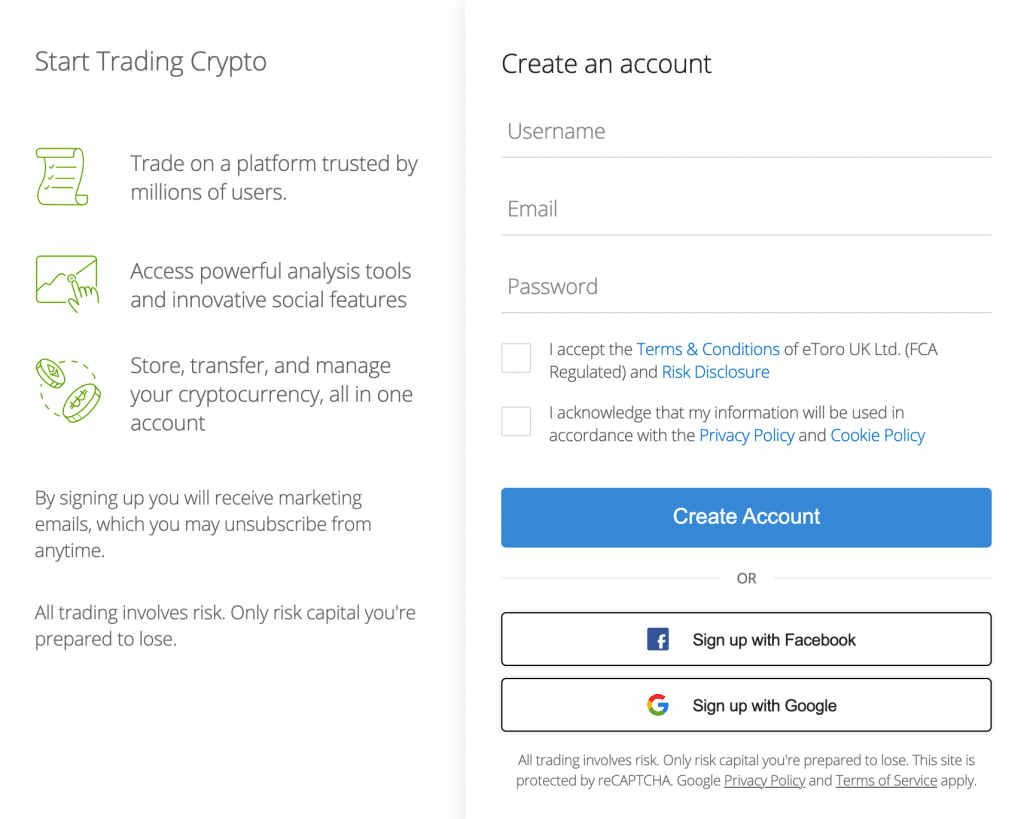
67% of retail investor accounts lose money when trading CFDs with this provider.
After signing up you can work on getting your account verified. This is a compliance requirement that helps institutions and regulators ensure the Anti Money Laundering measures are in place. Verification can be completed quickly by uploading proof of identity (POI) and proof of address (POA). Simply, provide a photo ID (passport, driving licence) and a bank statement or utility bill for proof of address and your account should be verified in around 15 minutes.
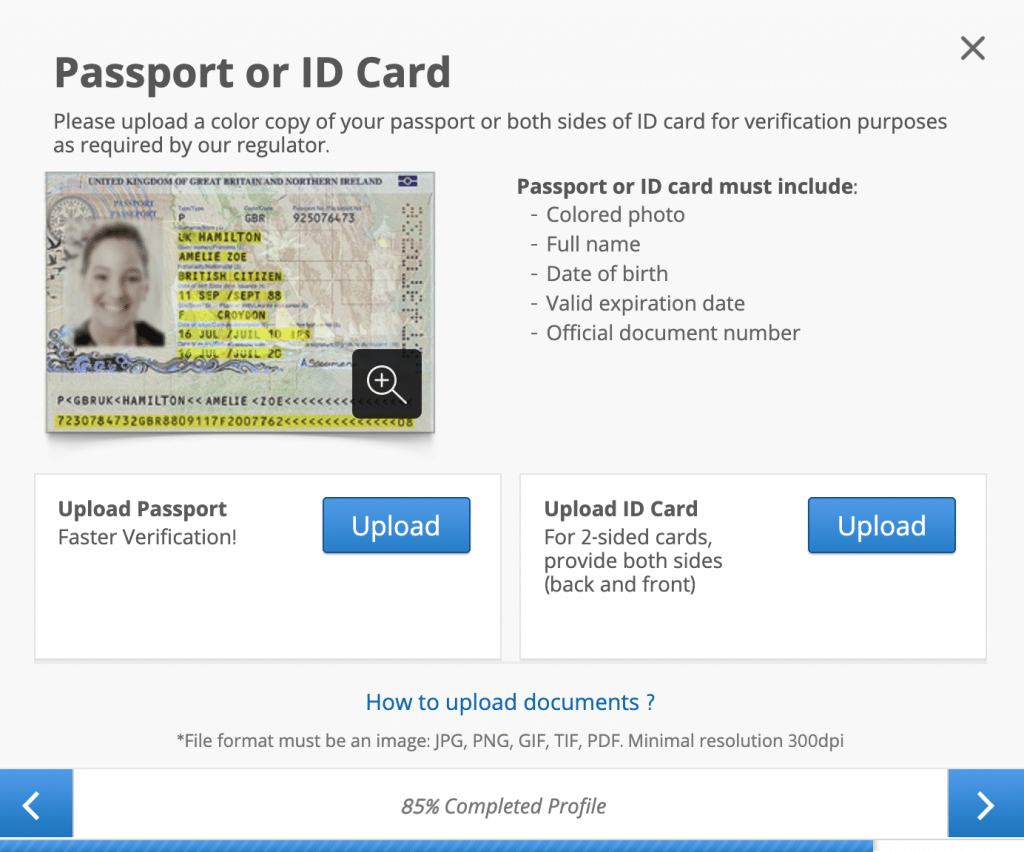
A verified account is going to get you very close to financial markets. There is one final step and that’s making deposits to your brokerage account. You can deposit funds commission-free on eToro through several methods such as bank transfers, debit/credit cards, Paypal and Skrill. To proceed with depositing money just choose your deposit method and click on “Deposit Funds” and enter the amount you want to deposit. Then press “Deposit” and your funds will be transferred to your brokerage account in a short time.
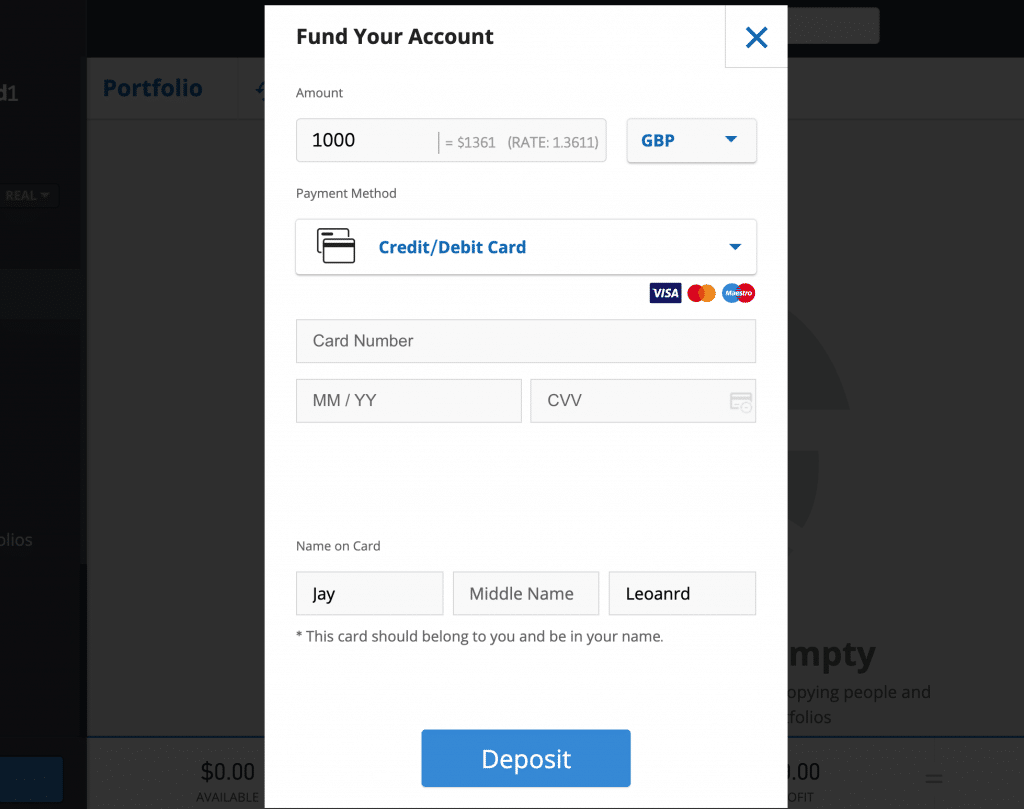
After having deposited money to your verified eToro account, you will be able to start buying and selling different classes of financial assets including company shares, indices, ETFs, crypto assets, commodities and foreign currencies. To start trading, just type the name of the asset such as “ASX” into the eToro search bar, find the related assets, press “Trade” and proceed with the amount you’d like to invest by pressing “Buy”. Congratulations you have just invested in the Australian Stock Market!
Investing for retirement is a very important activity that must be handled carefully to ensure safe and successful outcomes. While there are traditional approaches to creating balanced and diversified investment portfolios based on each individual’s risk appetite, some investors may also choose to be more creative and take various levels of risk within the boundaries of safe and secure implementations. Historically, bonds, notes, stocks and ETFs have been common components of retirement investments and we have slightly elaborated these broad topics.
Gaining knowledge in finance and financial assets can also be beneficial for investors with any strategy and online brokerage firms provide easy and affordable access to state-of-art trading solutions today. Platforms usually come with refined learning resources which can be intellectually satisfying and help investors navigate financial markets in more savvy ways.